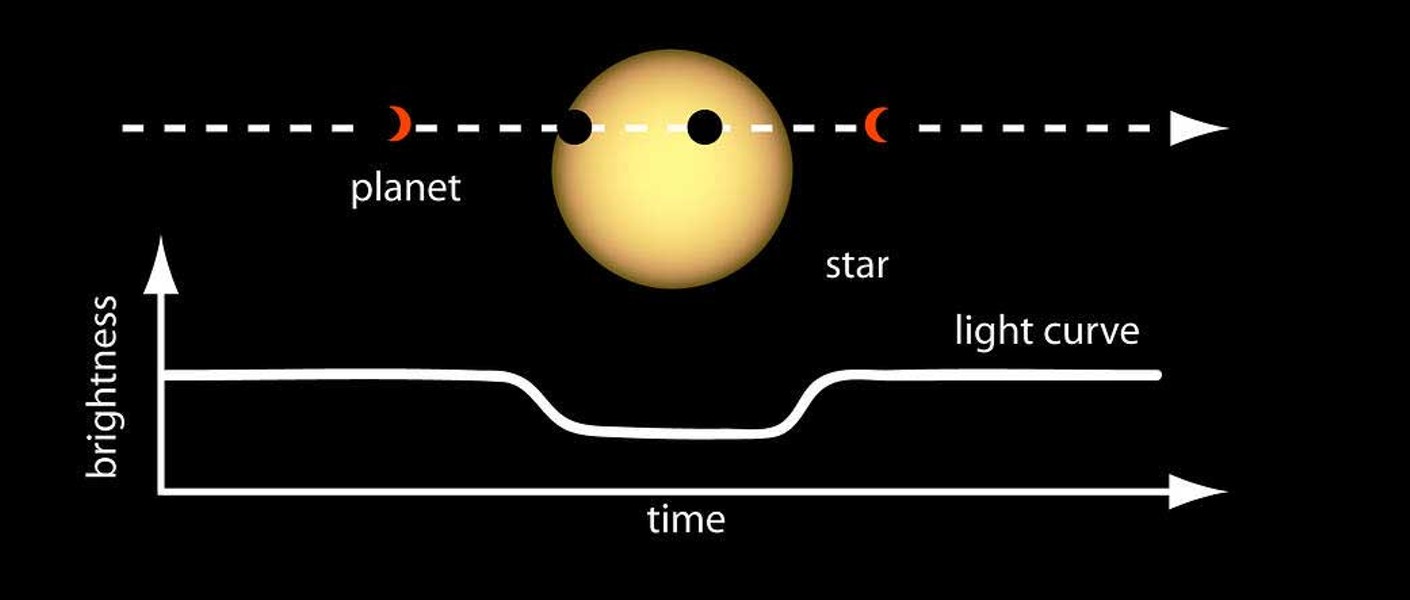Last time, we discussed how NASA's recently launched Transiting Exoplanet Survey Satellite, or TESS, will spend the next two years surveying nearly the entire sky to search for planets orbiting nearby stars, up to about 100 light years distant. TESS's four wide-field cameras will spend a month at a time staring at swaths of the sky, each about the size of the Orion constellation (24 x 96 degrees).
It's astonishing how much information can be gleaned about an exoplanet by simply measuring the dip in starlight as the planet transits its star. Astronomers know the size of the star from its spectrum, and they calculate the planet's size by noting the fraction of starlight obscured by the planet (see diagram). Knowing how frequently the transits take place establishes the planet's orbital radius (from Kepler's third law of planetary motion). The planet's mass can be inferred from another exoplanet trick, the "radial velocity method," whereby Doppler spectroscopy measures a star's acceleration as the orbiting planet pulls it slightly to and fro. That gives the planet's density, clueing us in to whether it's rocky, icy or a gas giant like Jupiter or Saturn.
As I wrote last time, TESS can be thought of as a finderscope because its forte is identifying possible Earth-like planets worthy of further investigation by large ground and space-based telescopes, such as the European Space Agency's CHEOPS (Characterising Exoplanet Satellite), to be launched later this year, and NASA's 21-foot James Webb Space Telescope, scheduled for launch in 2020. (Hubble's telescope, in contrast, is 8-foot in diameter.) The next generation of telescopes will focus on individual stars, especially comparatively bright, nearby planets (identified by TESS) that orbit within the so-called "habitable zone." That's the band around a star where the star's heat is strong enough to melt ice, but not strong enough to vaporize it. Here in our own solar system, we're clearly in the sun's habitable zone, but Venus isn't (water would boil on its 900 degrees F surface). Since Mars once harbored oceans, before it lost most of its atmosphere, it is considered to be in the habitable zone.
If we did identify a rocky planet within the habitable zone of a close (< 100 light years) star, what then? Today's exquisitely sensitive spectrometers can analyze the atmosphere (if it has one) of a relatively close exoplanet by comparing its star's normal spectrum to its spectrum while being transited. An atmosphere doesn't guarantee life, of course, but it's surely a prerequisite for life, without venturing into the more speculative realms of science fiction. (Fans of, for instance, Robert Forward's Dragon's Egg will know what I mean.) The Holy Grail here is oxygen, which — almost certainly, there's some debate — infers photosynthesis.
After that, it's Little Green Men all the way.
Barry Evans ([email protected]) conveniently forgot to note that, traveling at a tenth of the speed of light, it would take a lifetime to reach even the closest stars.


Comments